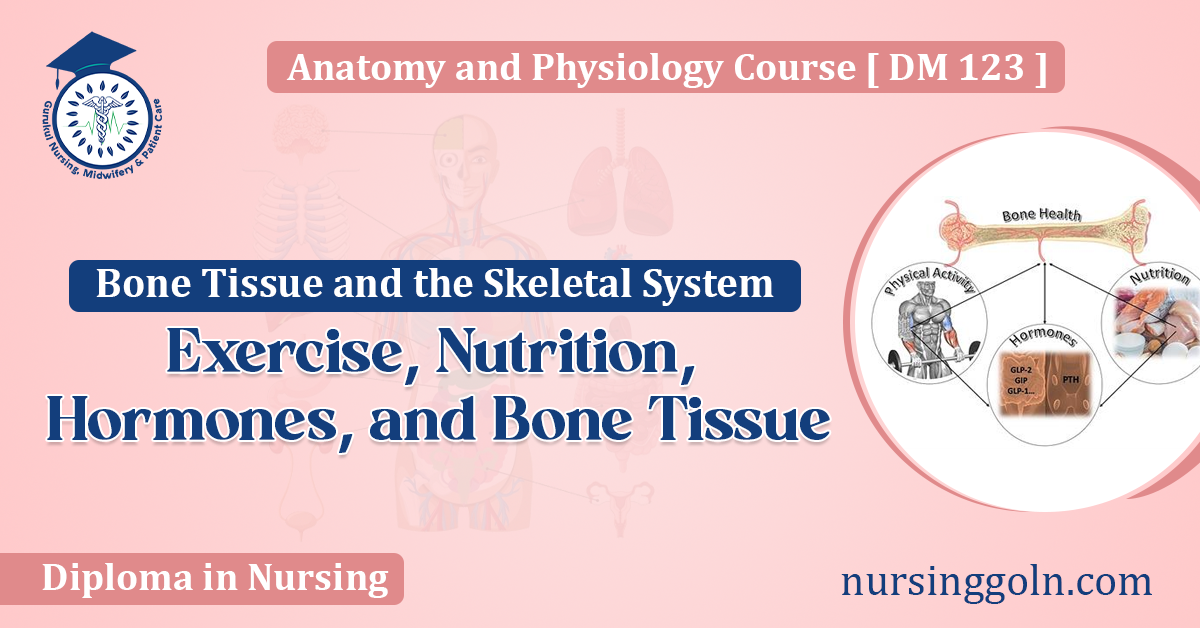Our bones are not static structures. They constantly remodel and adapt, and the processes that control these changes are complex, intertwined, and incredibly fascinating. One might be surprised to learn just how interconnected our daily activities, our diet, our hormones, and our bone tissues truly are. In this article, we will delve into the intricate relationship between exercise, nutrition, hormones, and bone tissue in the context of the skeletal system.
Exercise, Nutrition, Hormones, and Bone Tissue

1. The Dynamic Nature of Bone Tissue
Bones might seem solid and unchanging, but they’re a hive of activity on the microscopic level. The skeleton undergoes regular remodeling, a process where old bone is replaced with new bone. This involves two main types of cells: osteoblasts, which lay down new bone, and osteoclasts, which resorb or break down old bone. This dynamic balance ensures that bones maintain their strength and adapt to the stresses they face.
2. The Role of Exercise
Regular physical activity has been shown to have numerous health benefits, one of which is promoting bone health. Here’s how exercise influences our bones:
- Mechanical Stress: Bones adapt to the loads placed upon them. Weight-bearing exercises like walking, running, and resistance training apply stress to the bones, which in turn stimulates bone-forming cells (osteoblasts) to lay down more bone, thereby increasing bone density.
- Improved Balance and Coordination: Exercise, particularly activities like yoga and Tai Chi, can improve balance and coordination. This is vital for preventing falls, a major cause of bone fractures, especially in the elderly.
3. Nutrition’s Integral Role
Our diet plays a pivotal role in bone health. The food we consume provides the building blocks required for bone formation and influences bone remodeling.
- Calcium: Often regarded as the cornerstone of bone health, calcium is a mineral crucial for bone formation. Dairy products, fortified foods, leafy greens, and fish are excellent sources of calcium.
- Vitamin D: This vitamin is essential for calcium absorption in the gut. Without adequate Vitamin D, even a calcium-rich diet wouldn’t benefit bone health. Sunlight is a natural source of Vitamin D, but it can also be obtained from foods like fatty fish, fortified dairy, and egg yolks.
- Other Nutrients: Phosphorus, magnesium, vitamin K, and protein also play critical roles in bone health. A well-balanced diet ensures that our bones receive all the nutrients they need.
4. Hormones and Bone Tissue
Hormones are chemical messengers that play pivotal roles in bone remodeling. Several hormones have direct and indirect impacts on bone tissue:
- Parathyroid Hormone (PTH): Produced by the parathyroid glands, PTH increases when blood calcium levels drop. It stimulates osteoclast activity, leading to bone resorption and the release of calcium into the blood.
- Calcitonin: Produced by the thyroid gland, calcitonin decreases the activity of osteoclasts, reducing bone resorption and increasing bone formation.
- Sex Hormones: Estrogen and testosterone play a role in bone growth and strength. Estrogen, in particular, inhibits osteoclasts, thus reducing bone loss. This is why post-menopausal women, who have reduced estrogen levels, are at a higher risk for osteoporosis.
- Growth Hormone and Insulin-like Growth Factors: These hormones stimulate bone formation and bone resorption, thereby playing a role in maintaining bone mass.
5. Interplay of Factors and Bone Health
The health of our bones is influenced by a combination of exercise, nutrition, and hormonal balance. For instance:
- Osteoporosis: A condition characterized by weakened bone tissue and increased fracture risk. It’s often associated with a lack of weight-bearing exercise, poor calcium and vitamin D intake, and hormonal imbalances, particularly decreased estrogen levels.
- Peak Bone Mass: The maximum bone density attained in one’s life, usually by the late 20s. Higher peak bone mass reduces the risk of osteoporosis later in life. Factors influencing peak bone mass include nutrition during childhood and adolescence, physical activity, and hormonal levels.
6. Future Perspectives and Recommendations
Understanding the interplay of exercise, nutrition, and hormones on bone tissue opens the door to effective interventions. Some recommendations for maintaining and promoting bone health include:
- Engage in Regular Weight-bearing Exercise: Activities such as walking, jogging, weightlifting, and even dancing can promote bone health.
- Consume a Balanced Diet: Ensure adequate intake of calcium and vitamin D, and don’t forget other vital nutrients like magnesium and vitamin K.
- Monitor Hormonal Levels: Especially for post-menopausal women, ensuring hormonal balance can be vital for bone health. Hormone Replacement Therapy (HRT) might be beneficial, but it’s essential to discuss risks and benefits with a healthcare provider.
- Avoid Smoking and Limit Alcohol Intake: Both smoking and excessive alcohol can adversely affect bone health.
In conclusion, the skeletal system is intricately linked with our lifestyle, diet, and the hormonal environment in our bodies. By understanding these connections, we are better equipped to make decisions that foster bone health throughout our lives. Healthy bones support us, allow us to move, and protect our vital organs, making it imperative that we prioritize their well-being.
